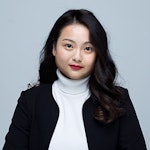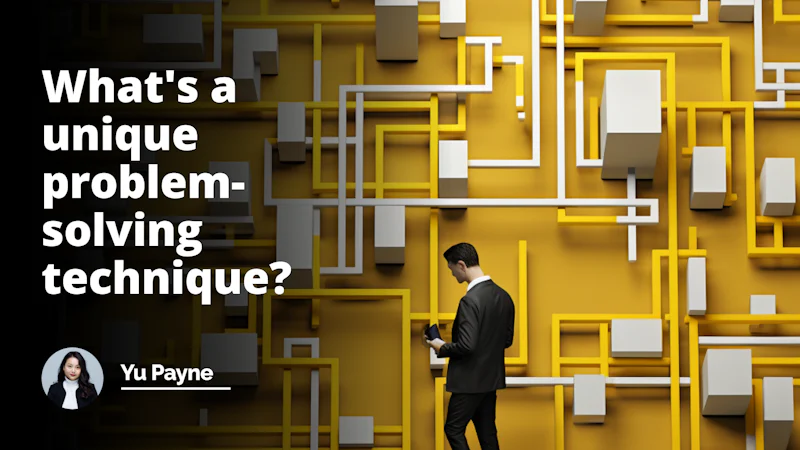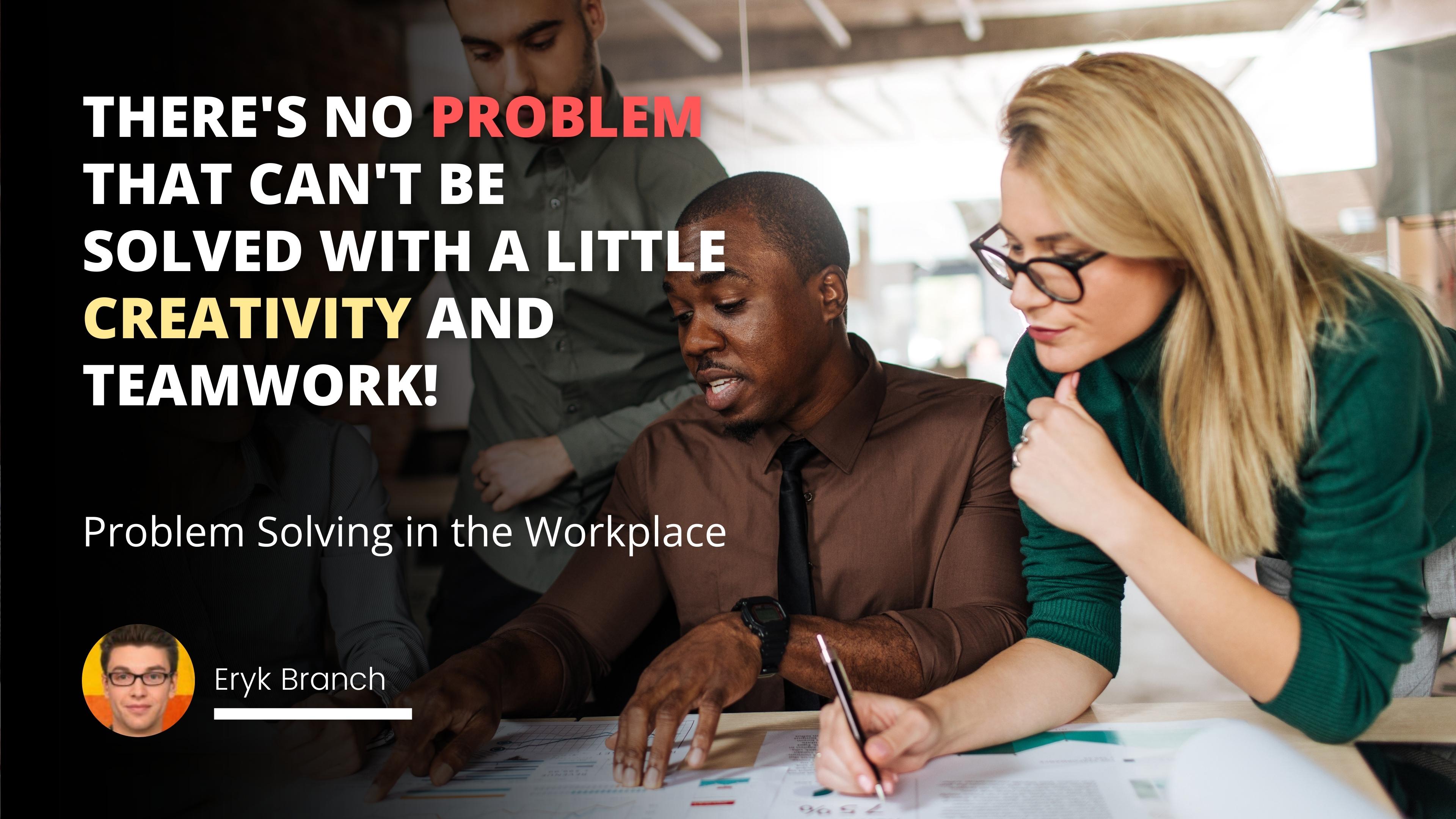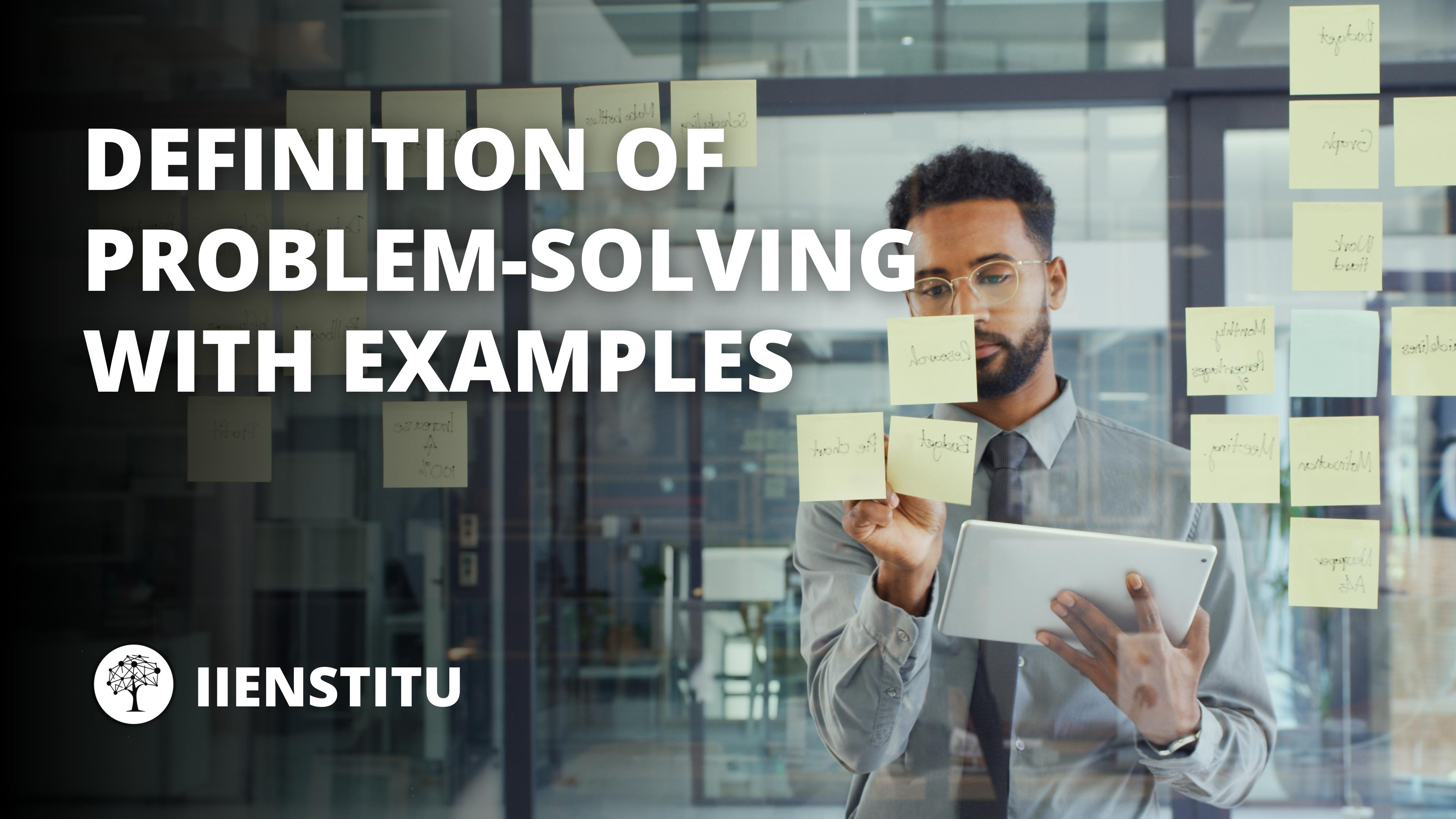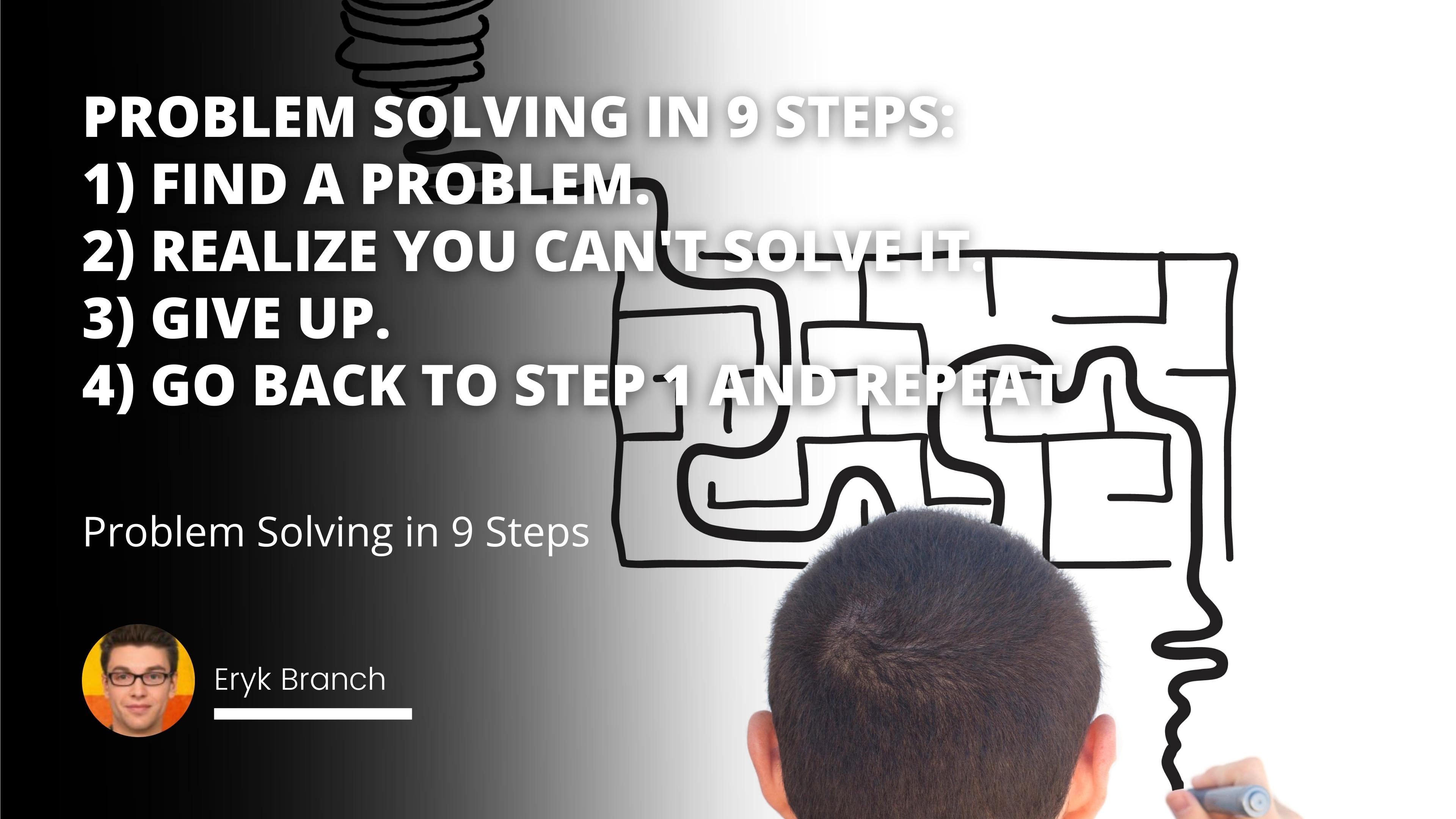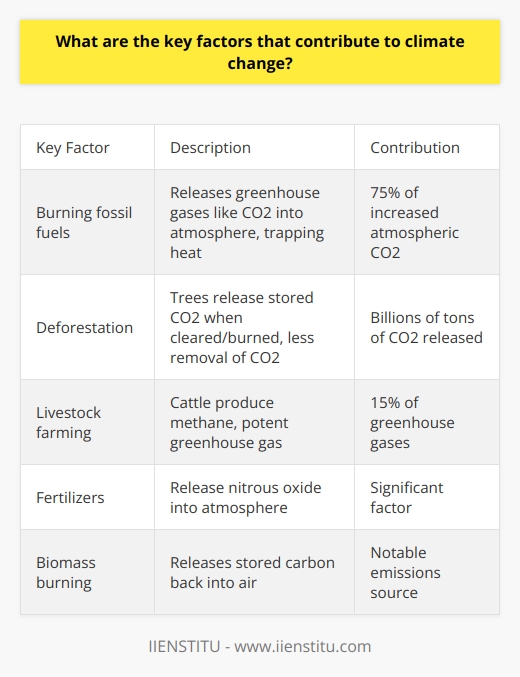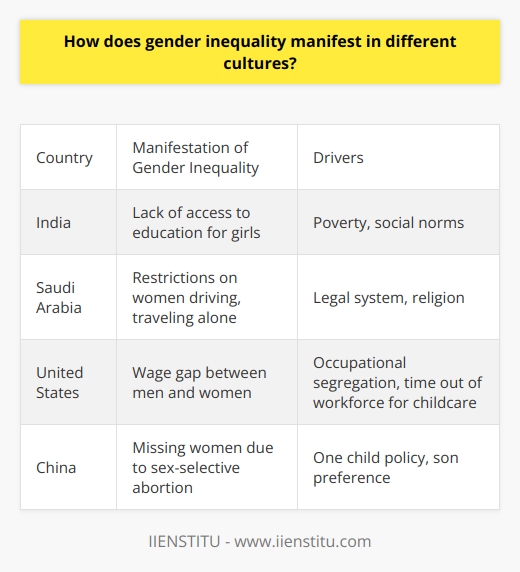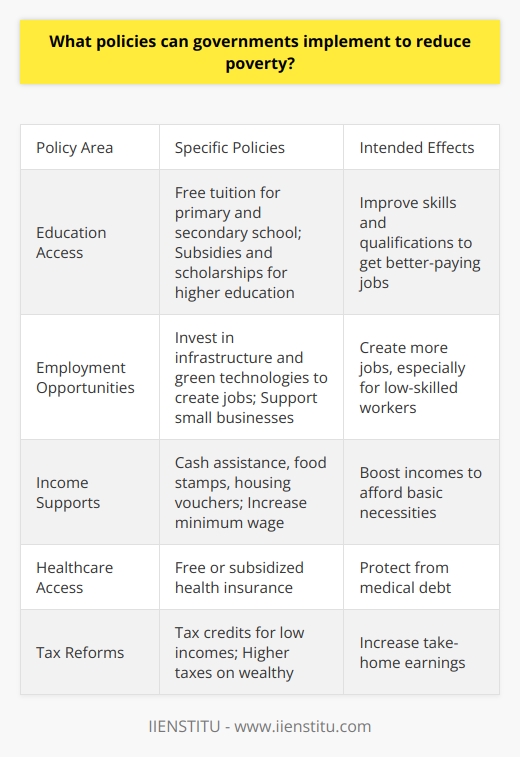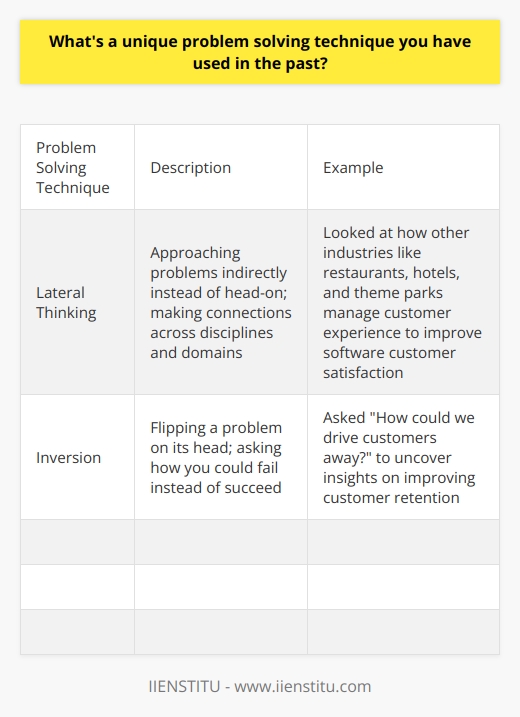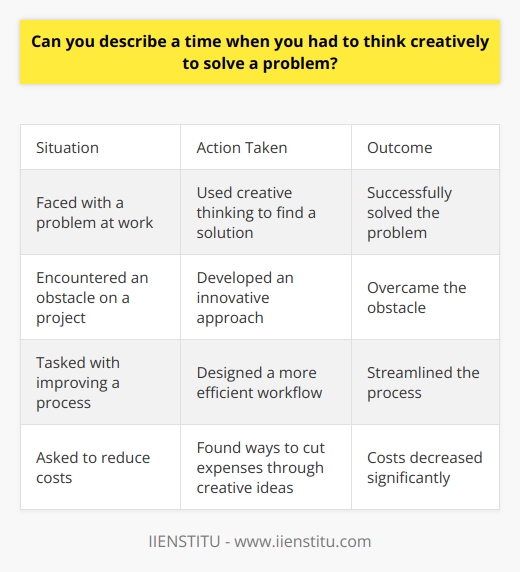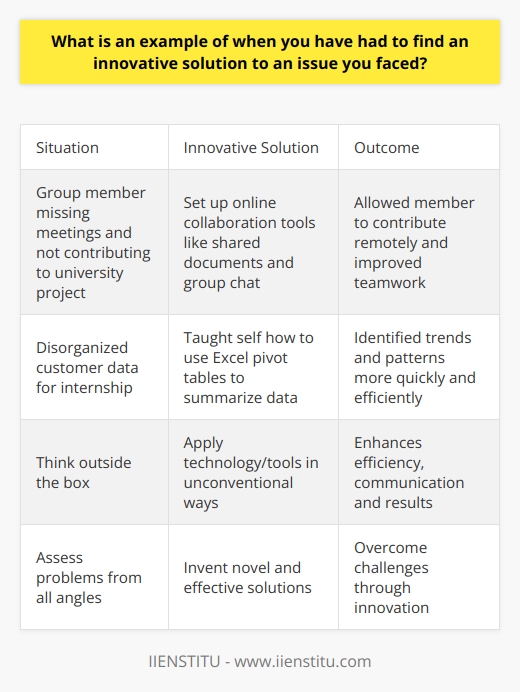You know, I've been on both sides of the interview table more times than I can count. And one thing that always stands out to me is how interviewers try to understand a candidate's approach to problem-solving. It's not just about whether you can solve the problem, but how you do it. They often throw in questions about unique problem-solving techniques, aiming to dig deep into your critical thinking abilities, creativity, and how you handle challenges when the going gets tough.
I remember back when I was interviewing for my first managerial role. The interviewer asked me, "Can you share a unique problem-solving technique you've used?" I was caught off guard initially, but then I realized they weren't just looking for textbook answers. They wanted to see if I could think outside the box and bring fresh ideas to the table.
The Purpose Behind Asking About Unique Problem-Solving Techniques
So, what's the deal with this question anyway? Well, interviewers use it to assess your problem-solving skills beyond the usual methods. They want to see if you can approach issues from a new angle and come up with innovative solutions. It's kind of like testing whether you can color outside the lines when needed, you know?
In today's fast-paced world, companies are facing complex challenges that require more than just conventional thinking. They need folks who can innovate, adapt, and think on their feet. By asking about your unique problem-solving techniques, they're essentially gauging whether you can bring that extra spark to the team.
At What Interview Level is This Question Asked?
Now, you might wonder if this question is only for senior positions. Honestly, it can pop up at just about any level. Sure, it's common in mid to senior-level interviews where problem-solving is a big part of the job. But even in entry-level positions, showing that you have the potential to think creatively can set you apart.
Storytelling Approach: The candidate can share an example where they used storytelling as a problem-solving technique. They can explain how they used a narrative approach to engage stakeholders, communicate the problem effectively, and propose a solution that resonated with others.
Reverse Thinking: Another unique problem-solving technique could involve reversing the conventional thinking process. The candidate could describe a situation where they approached the problem from the opposite direction, challenging assumptions and achieving a breakthrough solution.
Analogical Reasoning: Using analogies to solve problems can demonstrate a candidate's ability to find connections and transfer knowledge from one domain to another. Sharing a specific example where they used this technique to solve a complex problem would impress the interviewer.
Design Thinking: Design thinking is a popular problem-solving approach that involves empathizing with users, defining the problem, ideating, prototyping, and testing solutions. Describing how they applied this technique and the positive impact it had on solving a problem would be highly valuable.
For example, my niece recently interviewed for an entry-level role in marketing. She was asked to describe a time when she solved a problem in an unconventional way. It wasn't about her years of experience but about her ability to think creatively and bring new ideas to the team.
What Kind of Answer Are They Looking For?
So, when faced with this question, what should you say? The interviewer expects you to share a concrete example of a unique problem-solving technique you've used. It's your chance to shine by showcasing how you think differently.
They want to hear about:
The context of the problem.
The unique approach you took.
The rationale behind your method.
The positive outcome that resulted.
It's not just about telling a story; it's about demonstrating your ability to innovate and think critically.
Possible Unique Problem-Solving Techniques to Consider
Let me share some techniques that you might relate to:
How can one approach problem-solving in a unique way?
Can you suggest an unconventional technique for solving problems effectively?
Have you come across any distinctive problem-solving strategies that yield successful outcomes?
What are some innovative problem-solving methods that you have encountered?
In your opinion, what constitutes a distinctive approach to resolving problems?
Are there any unconventional problem-solving techniques that you find particularly effective?
Could you share any unique problem-solving techniques that you have found beneficial?
What unconventional strategies do you employ when faced with solving complex problems?
Have you ever utilized a distinctive problem-solving approach that produced exceptional results?
Can you provide examples of out-of-the-box problem-solving methods that you have employed successfully?

Storytelling Approach
Believe it or not, storytelling isn't just for kids. I've found that using storytelling as a problem-solving tool can be incredibly powerful. For instance, in a previous role, I was tasked with improving team morale. Rather than sending out another dull memo, I crafted a story that illustrated our team's journey, challenges, and potential triumphs. This narrative approach engaged everyone on a personal level, and we saw a significant boost in team engagement.
Reverse Thinking
Sometimes, flipping things on their head can lead to breakthroughs. I recall a time when our supply chain was experiencing delays, and nothing seemed to fix it. So, we tried reverse thinking: instead of asking how we could speed up the process, we asked what was slowing it down. This shift in perspective helped us identify bottlenecks we hadn't considered before.
Analogical Reasoning
Drawing parallels from unrelated fields can spark innovative solutions. When we were struggling with optimizing our supply chain management process tips I wish I'd known earlier, I looked at how traffic systems manage flow during peak hours. By applying similar principles, we streamlined our logistics in ways we hadn't imagined.
Design Thinking
This approach has gained popularity for a reason. It's all about empathizing with the user, defining the problem, ideating, prototyping, and testing. I once led a project where we applied design thinking to develop a new product feature. By involving customers early on and iterating based on feedback, we created something that genuinely met their needs.
Considerations When Crafting Your Answer
When you're answering this question, it's crucial to provide a structured and compelling response. Here's how you might go about it:
1- Set the Scene: Briefly describe the context and the problem you faced.
2- Explain Your Approach: Detail the unique technique you employed.
3- Share the Rationale: Explain why you chose this method over conventional ones.
4- Highlight the Outcome: Emphasize the positive results achieved.
5- Connect to the Role: Relate your experience back to how it can benefit the organization you're interviewing with.
For example, you might say:
>"In my previous role, we faced a significant drop in customer satisfaction. Instead of conducting traditional surveys, I organized a series of informal chats over coffee with our clients. This relaxed setting encouraged honest feedback. I discovered that clients felt our processes were too rigid. By introducing more flexibility, we improved satisfaction scores by 20%. I believe this approach shows my ability to seek out-of-the-box solutions that could be valuable in your customer-centric culture."
Why This Matters
By providing such an answer, you're not only showcasing your problem-solving skills but also your ability to adapt and align with the company's needs. You're demonstrating that you can:
Think critically and creatively.
Communicate effectively.
Drive positive outcomes.
Bring fresh perspectives to the team.
Personal Anecdotes that Make a Difference
Let me tell you about a time when I had to get real creative. We were in the middle of a project that hit a massive roadblock due to unexpected regulatory changes. The team was stressed, deadlines were looming, and traditional solutions weren't cutting it.
That's when I thought about applying principles from "The Innovator's Dilemma" by Clayton M. Christensen. Instead of fighting the change, we decided to embrace it and pivot our strategy entirely. We looked at the disruption as an opportunity rather than a setback. This mindset shift not only saved the project but also opened up new market possibilities we hadn't considered.
Incorporating Innovative Techniques in Supply Chain Management
Speaking of supply chains, optimizing them can be quite the puzzle, can't it? I've learned that applying unique problem-solving techniques here can lead to significant efficiencies. For instance, using simulation modeling to predict potential disruptions or leveraging lean management principles can make a world of difference.
Here are some tips to optimize supply chain management processes:
1- Implement Predictive Analytics: Anticipate issues before they arise.
2- Foster Collaborative Relationships: Work closely with suppliers and partners.
3- Adopt Flexible Strategies: Be ready to pivot when necessary.
4- Invest in Technology: Use tools that enhance visibility and efficiency.
5- Focus on Sustainability: Incorporate eco-friendly practices for long-term benefits.
By integrating these strategies, you not only solve immediate problems but also build a more resilient supply chain.
Similar Interview Questions You Might Encounter
Now, just so you're prepared, here are some variations of the question that interviewers might ask:
"How can one approach problem-solving in a unique way?"
"Can you suggest an unconventional technique for solving problems effectively?"
"Have you come across any distinctive problem-solving strategies that yield successful outcomes?"
"What are some innovative problem-solving methods that you have encountered?"
"In your opinion, what constitutes a distinctive approach to resolving problems?"
Being ready with thoughtful answers to these can give you a real edge.
Final Thoughts
At the end of the day, the question about unique problem-solving techniques is more than just a hurdle in an interview. It's an opportunity. It's your chance to showcase how you think, how you adapt, and how you can bring something special to the table.
Don't be afraid to share your stories, even if they seem a bit unconventional. Sometimes, it's those unique experiences that make you stand out. Remember, companies are looking for people who can not only solve problems but do so in ways that push boundaries and drive innovation.
And who knows? Your unique approach might just be the fresh perspective they didn't even know they needed.
References
1- Christensen, C. M. (1997). The Innovator's Dilemma: When New Technologies Cause Great Firms to Fail. Harvard Business School Press.
2- Kahneman, D. (2011). Thinking, Fast and Slow. Farrar, Straus and Giroux.
3- Pink, D. H. (2006). A Whole New Mind: Why Right-Brainers Will Rule the Future. Riverhead Books.

